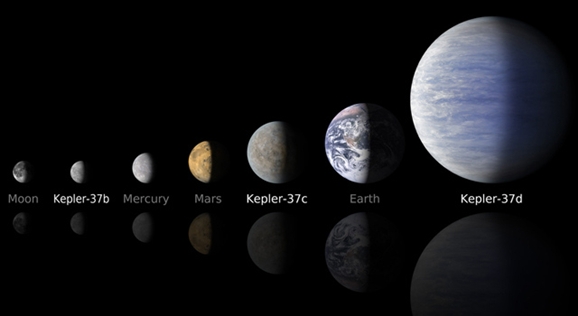Smallest Exoplanet Yet Discovered With Kepler Telescope
This article is more than 2 years old
Until we get electronic eyes deep in space, humans are left to do our deepest explorations of the galaxy from here on Earth. Back in Galileo’s time, this might have been considered a hardship, but technological advancements come at such a rapid rate, it’s nearly impossible to keep up with everything astronomers are discovering.
Using NASA’s Kepler telescope, scientists discovered the lovingly titled Kepler-37b, the smallest exoplanet yet discovered, at a size slightly larger than that of our Moon. It orbits its star once every 13 days, at a distance one-third of that between the Sun and Mercury. Maybe a species of Sauna Monsters has evolved over the years, so let’s not rule out all life.

Kepler-37b is located around 210 light-years from our planet and is one of three planets orbiting its star. One, Kepler-37d, is over twice the size of Earth, while Kepler-37c is about three-quarters the size of our home planet. All three are in close orbit, so while the extraterrestrial life search won’t end here, it is a sure sign that detection methods are at an all-time high. Anybody can find giant exoplanets, but it’s the tiny ones that prove nobody is sleeping on the job. (That’s how I picture NASA pep talks going.)
“The fact we’ve discovered tiny Kepler-37b suggests such little planets are common,” says scientist Jack Lissauer of NASA’s Ames Research Center, “and more planetary wonders await as we continue to gather and analyze additional data.”












